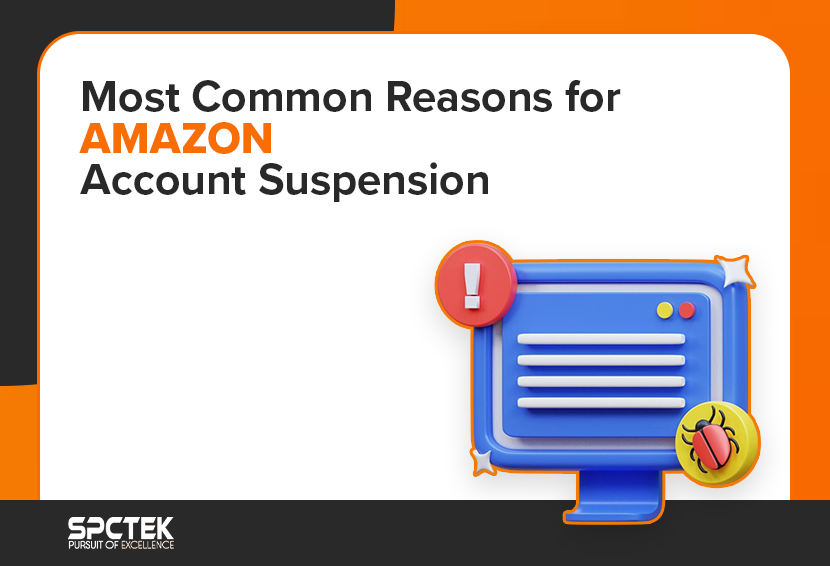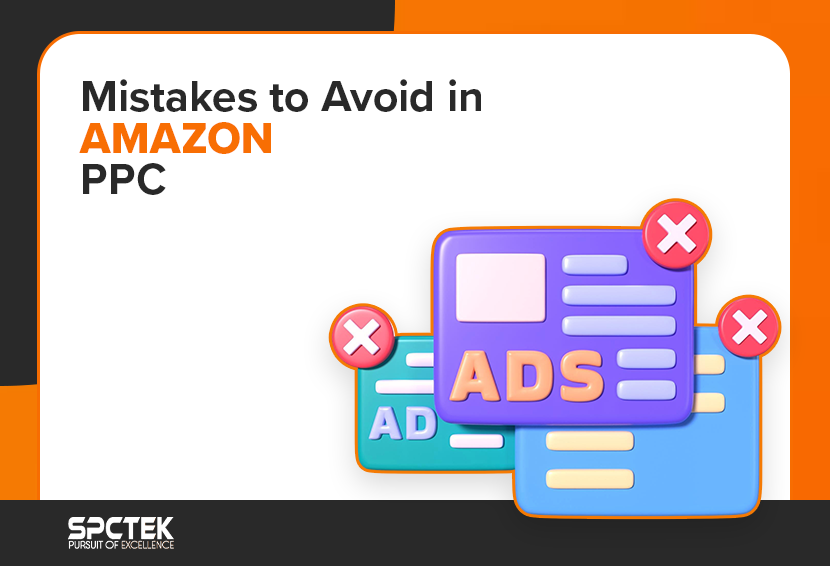When it comes to the world of e-commerce, Amazon is undoubtedly one of the biggest players in the game. With millions of sellers and customers worldwide, it offers a vast platform for businesses to thrive. However, it’s not all smooth in the Amazon marketplace. One of the most significant challenges that sellers face is the risk of having their accounts suspended. In this article, we will delve into the most common reasons for Amazon account suspension.
What Is Amazon Account Suspension?
An Amazon Seller Account Suspension is a critical issue for any business that sells on their platform. It signifies that Amazon has disabled your ability to sell on their website, either temporarily or permanently. This can have a devastating impact on your business by preventing you from listing products, fulfilling orders, and generating revenue. There are numerous reasons why Amazon might suspend your account, and it’s crucial to understand these reasons to avoid encountering an Amazon Account Suspension in the first place. If you do find yourself facing an Amazon Account Suspension, it’s vital to act promptly to understand the reason for the suspension and take the necessary steps to reinstate your selling privileges on Amazon.
Types of Amazon Account Restrictions

- Suspended: This means that your Amazon account is unserviceable, i.e., you can’t sell on your account. This occurs when you violate Amazon’s policies, and you may get a notification revealing the reason for the suspension. So, you need to submit an appeal in the form of a Plan of Action (POA) that aptly addresses the concerns expressed by Amazon. Amazon will review the appeal, and if they find it satisfactory, your account will be reinstated.
- Deactivated: In this status too, you can’t sell on your account. This also happens due to a policy violation. You need to communicate with Amazon and ensure filing a reconsideration request. This can also happen when one account is associated with another that has already been restricted from operating on Amazon.
- Denied: This is more alarming. You land in this spot when you submit a reconsideration request for reinstatement of your account, but it’s rejected. However, there’s still hope as you can submit your POA.
- Banned: This is a permanent suspension of your Amazon account. If your account is banned, you can no longer reinstate it. Amazon will not respond to your POAs or even read your emails. That is to say, your account is done for good.
The Leading Causes of Amazon Account Suspension

Now, let’s get to the heart of the matter: the most common reason for Amazon account suspension is performance-related issues. These issues encompass several aspects that all sellers should be intimately familiar with. Consider them the cornerstones of a healthy Seller Account:
1. Order Defect Rate (ODR)
The Order Defect Rate (ODR) is a crucial metric that serves as a barometer for the quality of your service as an Amazon seller. It acts as a comprehensive health check, encompassing various factors that can negatively impact the customer experience. Here’s a breakdown of what contributes to your ODR:
Negative Feedback: Customers who receive damaged items, experience incorrect orders, or have frustrating interactions with your customer service may leave negative feedback. This directly reflects on your ODR and can significantly contribute to amazon account suspension if not addressed promptly.
A-to-Z Guarantee Claims: Amazon’s A-to-Z Guarantee protects buyers who don’t receive their orders or receive items that are significantly different from the description. If customers have to file excessive A-to-Z claims against you, it raises a red flag for Amazon and increases your ODR.
Chargebacks: If a customer disputes a credit card charge for an order and their bank rules in their favor, it’s considered a chargeback. This can happen due to issues like non-delivery, unauthorized purchases, or significantly damaged items. Frequent chargebacks inflate your ODR and can lead to suspension.
Keeping your ODR below 1% is critical to maintaining a healthy Seller Account. By focusing on accurate product descriptions, high-quality packaging, prompt customer service, and efficient fulfillment, you can minimize negative feedback, A-to-Z claims, and chargebacks, ultimately safeguarding your account from suspension.
Also Read: How to Improve Amazon Account Health Rating (AHR) and Avoid Suspension?
2. Late Shipment Rate
Amazon places strong emphasis on delivering orders promptly. They understand that timely deliveries are paramount to customer satisfaction on their platform. Sellers must ensure that they consistently meet the promised delivery times set for each order.
This includes accurately reflecting your handling time (processing time) upfront, and choosing reliable shipping methods that can meet those timeframes.
It’s crucial to note that maintaining a low late shipment rate is vital for seller success. Ideally, you should strive to keep your late shipment rate below 4%.
A history of late shipments can damage your reputation on Amazon. Over time, it can lead to a decline in sales and make it difficult to attract new customers.
3. Pre-Fulfillment Cancel Rate
While Order Defect Rate and Late Shipment Rate are often the performance metrics on every seller’s radar, the Pre-Fulfillment Cancellation Rate can be a silent threat to your Amazon Seller Account health. This metric tracks the percentage of orders that you, the seller, cancel before shipment. It directly impacts the buyer’s experience, and exceeding the recommended threshold can lead to amazon account suspensions
4. Intellectual Property Violations
When sellers operate on Amazon, they are expected to adhere to a fundamental principle: respecting the intellectual property rights of others. This means they must not use, reproduce, or distribute intellectual property, such as trademarks, copyrights, or patents, without the proper authorization or permission from the rightful owners.
5. Inauthentic Products
Selling counterfeit or inauthentic products on Amazon is a significant violation of the platform’s policies, and it can have serious consequences for sellers. Counterfeit products are fake or imitation items that are made to look like genuine products but are not.
6. Policy Violations
Amazon’s policies can lead to various negative outcomes, including account suspension, reputational damage, and financial losses. Sellers should make every effort to comply with Amazon’s rules and guidelines to maintain a healthy and successful business on the platform
Also Read: Amazon Section 3 Violation: What You Need to Know
7. Multiple Accounts
Operating multiple seller accounts without proper authorization is a serious offense on Amazon, and it can have severe consequences for your business. Here’s why Amazon enforces this single-account rule and the risks you face if you violate it. Amazon wants to ensure a fair and competitive marketplace for all sellers.
Allowing multiple accounts per seller could give some sellers an unfair advantage. For example, a seller with multiple accounts could manipulate search results or exploit loopholes to gain more visibility. This would create an uneven playing field and ultimately hurt the customer experience.
Amazon does allow sellers to have multiple accounts under certain circumstances, but only with prior approval. If you have a legitimate business reason for needing more than one account, such as selling products in different categories under separate brands, you can apply for permission from Amazon. However, they have strict criteria and will only grant approval in exceptional cases.
By operating a single, authorized seller account and maintaining a good performance record, you can avoid the risk of suspension and ensure a smooth and profitable selling experience on Amazon.
8. Incorrect Information During Account Creation
Inaccurate information during account creation can be a recipe for disaster on Amazon. Amazon prides itself on being a secure and reliable platform for both buyers and sellers. Providing inaccurate details during signup disrupts this trust and can lead to account suspension. When you create a seller account, Amazon requires verification of your identity and business information.
This verification process helps ensure the legitimacy of sellers on the platform. If the information you provide during signup doesn’t match your verification documents (government ID, bank statements, tax documents etc.), it will raise red flags for Amazon and could lead to suspension.
By being upfront and truthful when creating your seller account, you can avoid these problems and ensure a smooth start to your Amazon selling journey.
Also Read: How to Craft a Winning Plan of Action (POA) for Amazon Account Reinstatement?
The Consequences of Amazon Account Suspension
When your Amazon seller account gets suspended, the consequences can be terrible. You lose access to your inventory and the ability to fulfill orders, which can lead to a significant loss in revenue. Moreover, your reputation as a seller may be damaged, making it harder to bounce back even after the suspension is lifted.
Also Read: How to Craft a Winning Plan of Action (POA) for Amazon Account Reinstatement?
Why You Should Prioritize an Amazon Account Health
Amazon Account Health is a metric that reflects how well you’re adhering to Amazon’s selling policies and performance expectations. It essentially indicates the overall health of your seller account on the platform. A good account health score is crucial for maintaining good standing with Amazon and avoiding potential account suspension or deactivation.
Can You Recommend Services That Help with Amazon Account Reinstatement?
Here are some reputable companies in the United States that specialize in helping Amazon sellers recover their accounts:
1. SPCTEK: Offers a structured, personalized approach, focusing on swift reinstatement and post-reinstatement support. offers a money-back guarantee in certain cases.
2. Riverbend Consulting: Staffed by ex-Amazon insiders and veteran sellers. Offers account and ASIN appeals, proactive account protection, and has a strong track record of positive reviews.
3. Mr. Jeff AMZ: Known for competitive pricing and a comprehensive approach, including escalation channels like the Better Business Bureau and Amazon executive appeals. Offers full reinstatement packages.
4. SellerAppeal: Focuses on a detailed understanding of Amazon policies and investigates the true root cause before crafting a tailored Plan of Action (POA)
5. My Amazon Guy (MAG): Claims a high success rate, with 70% of accounts reinstated within 72 hours. Offers training courses for sellers who want to handle reinstatement themselves.
6. The Appeal Guru: Known for a large number of successful appeals, often offering refund guarantees and free repeat appeals for the same case.
7. AMZ Sellers Attorney®: Legal experts specializing in complex suspensions like intellectual property disputes or Section 3 suspensions.
Key Factors to Consider When Choosing a Service
Before hiring a reinstatement service, make sure to verify the following:
- Experience & Track Record: Look for services that have successfully handled suspensions similar to yours.
- Customized Plan of Action (POA): Avoid generic templates; the appeal should address your specific suspension cause.
- Pricing & Guarantees: Ensure transparent pricing, clear payment terms, and check if a money-back guarantee is available.
- Escalation Methods: Confirm that the service knows how to handle follow-ups and escalate to higher-level Amazon teams if necessary.
- Red Flags: Avoid anyone promising guaranteed reinstatement, suggesting fraudulent documents, or claiming insider connections at Amazon.
Questions to Ask Before Hiring
Before taking reinstatement service from an agency, it is important to discuss the following questions:
- What is included in their service (POA drafting, follow-up, submission)?
- What is their success rate, and can they provide verifiable testimonials?
- How do they handle different types of suspensions (performance, IP, multi-account, counterfeit)?
- Do you maintain access to your account, or are you required to share credentials?
Hiring a professional reinstatement service can save you time, reduce stress, and maximize your chances of getting back
Is your Amazon Seller Account Suspended?
At SPCTEK, we understand the frustration and potential loss associated with having your Amazon seller account suspended. As a leading provider of Amazon account reinstatement service, we pride ourselves on offering the most cost-effective solutions in the market. With a proven track record of success, our team has successfully reinstated numerous seller accounts in 2023 alone.
Facing an account suspension can be a daunting experience, but SPCTEK is here to help. Our dedicated team of experts specializes in navigating the complexities of Amazon’s suspension process, ensuring a swift and efficient resolution for our clients. From crafting compelling appeals to communicating with Amazon on your behalf, we handle every step of the reinstatement process with professionalism and expertise.
Conclusion
In the world of e-commerce, Amazon provides an incredible platform for businesses to thrive. However, maintaining a clean and compliant seller account is crucial. The most common reason for Amazon account suspension is performance-related issues, including order defect rate, late shipments, and policy violations.
To avoid suspension and ensure long-term success on Amazon, sellers must stay vigilant, adhere to Amazon’s policies, and continually strive to provide exceptional service to their customers. By doing so, you can navigate the challenges of the Amazon marketplace and build a thriving online business.
Got More Questions?
Amazon will usually notify you via email and within Seller Central, outlining the specific reasons for the deactivation. Check your notification inbox and “Performance” section for details.
No, opening a new seller account while your existing one is suspended is strictly prohibited and could lead to permanent termination. Focus on appealing the existing suspension instead.
Yes, you can use professional services to assist you in appealing your Amazon seller account suspension. One such service is SPCTEK, which offers an Amazon Account Reinstatement Service with up to 100% Money Back Guarantee.
Ignoring the suspension, failing to appeal, not taking responsibility for the violation, and not implementing improvements are all common mistakes that can hinder reinstatement. Be proactive, address the issues, and demonstrate your commitment to improvement.
Yes, “deactivated” and “blocked” are often used interchangeably for Amazon seller account suspensions. Both terms mean you’re temporarily unable to sell on the platform.






